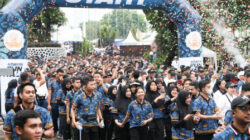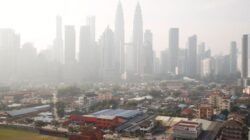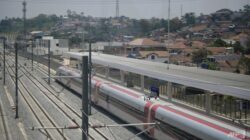SINGAPORE, DURASI.co.id – New policies on unemployment support will likely be calibrated to provide a temporary safety net for those who have been laid off while encouraging skills upgrading to improve job prospects, economists said.
This will also help to prevent abuse of the upcoming policy, they added.
The idea of unemployment support in Singapore has been mentioned by ministers on various occasions over the past year. Most recently, Deputy Prime Minister Lawrence Wong said such help for the involuntarily unemployed will come under a revamp of the nation’s SkillsFuture programme.
This does not have to be an insurance scheme, he said. Instead, it can be government-funded benefits that are “appropriately sized” to help displaced workers tide through immediate difficulties and upskill.
Such a policy, when rolled out, would mark a reversal in the government’s long-held stance that direct support could disincentivise people to find work.
“For a long time, the government has been very cautious about introducing unemployment benefits … but looking at the faster pace of change and churn in our economy, we have revised and refreshed our thinking,” said Mr Wong, who is also Finance Minister.
SUPPORT SCHEME TO BE “UNIQUELY SINGAPORE”
Economists told CNA that the new support scheme could come with income or housing criteria, as well as attached conditions such as training, to ensure it is targeted at those who need it.
For instance, eligibility could be restricted to those who lost their jobs under involuntary circumstances and fulfill other conditions such as having worked for a minimum period. Those who were fired due to poor work performance would be excluded.
Other requirements – aimed at motivating people to find new jobs – could include attending training courses to upgrade existing skills or acquire new ones, having sought career guidance or counselling and being active in job searches, the economists added.
Such benefits that are calibrated based on demographics or come with strings attached are not unheard of.
For example in Australia, income support for the unemployed differs based on age, health conditions such as whether one is sick or injured, as well as family status.
Singapore is likely to opt for a targeted approach, as it has for past support schemes and to retain the principle of self-reliance, economists said.
“It will be calibrated in the ‘uniquely Singapore’ way we have done up past policies – zoom in and be quite specific, like having differentiated cash payouts based on housing types and family sizes,” said Mr Song Seng Wun, an economic adviser at CGS-CIMB Securities.
“Everything will be measurable, in terms of targets or parameters as to whether someone is actively looking for a job or transitioning to another industry,” he added.
“It must be measurable because you don’t want the system to be abused.”
Dr Kelvin Seah, senior lecturer at the National University of Singapore’s (NUS) economics department, also noted the need for “appropriate mechanisms” to be built into the upcoming policy, so that “individuals will not find it in their interest to game the system”.
One way is to have differentiated support based on unemployment duration.
“In the first few weeks of unemployment, the level of financial support received may be high but as the duration of unemployment increases, the level of financial support declines,” Dr Seah suggested.
That said, exceptions can and should be made in some cases, said Associate Professor Walter Theseira from the Singapore University of Social Sciences (SUSS), while describing the restriction of support to involuntary unemployment as “a tricky issue”.
“A system triggered based on involuntary unemployment is inconsistent with active career management and upskilling, where we want people to find new opportunities and get out when … they feel that their job role is no longer relevant to their skills or their industry is going downhill.”
Currently, workers are eligible for retrenchment benefits and that may encourage them to “hang on till the bitter end”, said Assoc Prof Theseira, who is a labour economist.
That said, there is a need to guard against potential abuse. Hence, benefits for those who voluntarily leave their jobs to improve their skills or transition into a new industry will likely have to be handled by a case-by-case process, he added.
For example, exceptions can be made for those in declining industries or sectors that are vulnerable to economic or technological disruptions.
WHY IS THIS BEING DONE?
While the risks of reducing workers’ motivation to find work have been typically associated with unemployment support, such a system has its benefits too.
“It helps to relieve the stress and anxiety individuals face when they find themselves displaced involuntarily,” said Dr Seah from NUS.
This also comes at a time when economic cycles are becoming shorter and more unpredictable with heightened risks involved, such as geopolitics and rapid technological shifts, Mr Song said.
These have affected not just the older employees, but also younger ones as seen from the layoffs in the technology industry over the past year.
The large number of layoffs in the tech sector last year could have been the “turning point” in the government’s assessment of support for retrenched workers, Dr Seah said.
“Many people lost their jobs, not necessarily because of poor work performance but due to technological changes and restructuring which went beyond their control. So, this likely prompted a rethink of the need for a scheme to better support displaced workers.”
Unexpected events, such as the COVID-19 pandemic, also add to the need for an “extra layer of cushion”.
“Events like these are completely unpredictable and even though the economy, on average, continues to generate more jobs than can be filled, there can be periods, like the pandemic, when further assistance can be needed,” said Mr Song.
During the pandemic, schemes were rolled out such as the COVID-19 Recovery Grant which gave up to S$800 (US$580) a month in temporary assistance to Singaporeans whose jobs were hit by the pandemic.
“These schemes were fairly unprecedented in giving out broad income relief to people who are unemployed, but I think it also made us realise that our existing relief systems actually cannot cope with any sort of sudden uptick in unemployment,” said Assoc Prof Theseira.
Currently, there are existing assistance schemes for unemployed people, such as ComCare’s short-to-medium-term assistance scheme. But these are largely targeted at the low-income groups, meaning that many other displaced workers such as those from the middle class fall through the cracks, he added.
Noting that unemployment support would be important amid growing economic volatility, Assoc Prof Theseira noted that the key message is to encourage workers to “voluntarily displace themselves and take more risks and opportunities in response to market changes”.
“The current system encourages people implicitly to hang on till the end in declining industries and jobs as long as they think they can get retrenchment benefits or because they have no alternative,” he said.
“We need to encourage more active career management, job search, skills upgrading and so on. Having a safety net could help there.”
Source: CNA/sk(cy)











